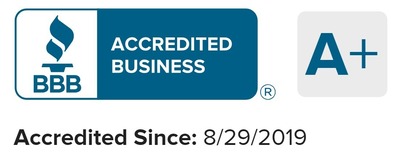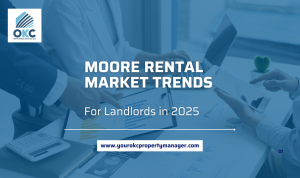Understanding the financial qualities of rental properties is crucial to real estate investment. A key tool in this analysis is the rent roll, which serves as an inclusive document outlining the rental income generated by properties. This essential resource lists details such as tenant names, lease dates, rental amounts, and additional charges, providing investors, landlords, and property managers with vital insights into cash flow and occupancy rates.
Whether you are a rental property investor, landlord, property manager, or lender, having access to comprehensive financial documents like rent rolls is crucial. As noted by REI Hub, rent rolls provide a snapshot of rental income and occupancy status, aiding in financial planning, property performance evaluation, and goal setting.
With over two decades of hands-on experience, I’ll break down what a rent roll is, who it’s for, its key benefits, and how to use it effectively. This guide will help you make smarter decisions and maximize returns in rent roll property management.
Maximize Your Rental Income with Hassle-Free Property Management
Request a Service →What is a Rent Roll?
A rent roll is a document used in real estate that provides a detailed overview of the rental income generated by a property. According to JPMorgan Chase, a rent roll helps assess a property’s income potential by detailing information such as unit size, occupancy status, tenant names, monthly rent, lease terms, and any extra charges or costs.
Though it seems like a simple document, the information can be utilized to calculate key financial performance metrics for rental properties, such as Gross Rent Multiplier (GRM), Capitalization Rate (Cap Rate), and Internal Rate of Return (IRR). These metrics are essential for evaluating property valuations and investment returns.
What Is the Purpose of a Rent Roll?
According to Fit Small Business, rental units have approached nearly 50 million in the US today, highlighting the significant scale of the rental market. This underscores the importance of tools like rent rolls for effective property management and investment analysis. The number of owner-occupied households has increased by nearly 10% from pre-pandemic levels, equaling about 86 million households as the United States Census has found that 50.3% were in properties with one to four units.
Thus, to handle multiple buildings, real estate agencies, and landlords need a quick and easy way to audit data. A property’s rent roll helps to reduce the elements of risk in buying and renting properties as it provides insights into cash flow, tenant turnover, rent growth, and payment reliability, aiding landlords and investors in making informed decisions regarding their real estate investments.
The rent roll also helps in aiding future sales to interested real estate buyers by keeping essential information related to the property.
What Details Are to be Added to a Rent Roll?
Generally, a rent roll report keeps specific information related to the property and can be expanded as the master rent roll for the entire rental property portfolio. The exact details on the rent roll can vary based on the type of property. However, to make a good lease roll the following information always needs to be included about the rental property:
Rental Unit Details:
- Property owner name or name of property management company
- Address of Property
- Type of Property (single-family, multi-family, short-rental terms, etc)
- Market area or zoning area of the property (residential, commercial, urban, suburban, mixed-use)
Information of Rental Unit:
- Unit number (#1 or A) if a property offers multi-rental units
- Square footage
- Number of bedrooms
- Number of bathrooms
- Number of doors and windows
- Size of lot
- Extra features (backyard, garage, storage shed, etc)
- other amenities (swimming pool, greenbelt, HOA, etc)
Details of Tenant:
- Name of tenant
- Number of occupants
- Tenancy start date
- Tenancy end date
- Complete rental agreement terms
- Security deposit held by a landlord
- Monthly rent
- prepaid rent
- past due rent
- Additional fees (pet fee, parking fee, storage fee, etc)
- Date of rent paid
- Rent concessions offered by a landlord to a tenant
- Monthly income, if known
Rental Income Summary:
- Total monthly rent collected (additional fees or late fees)
- Total annual rent collected (extra rental income, pest control, landscaping, additional or other annual fees charged to the tenant, etc.)
Examples of a Rent Roll
If you want to create a rent roll you need to use a spreadsheet software tool such as Google Sheets, Microsoft Excel, Zoho Sheet, and so on. A good rent roll has all the information like the name of the owner, the start and end date of a rental unit, the address of the property, and the type of the property. It is also important to know where to find rent roll data, as it provides valuable information about a property’s income potential and can be accessed through various platforms.
Where to get rent roll data from?
As the information on the rent roll is immense and valuable, there are a few sources to get it:
- Profit and loss for monthly and annual net income by unit.
- Lease agreement and tenant file for tenant information from rental property.
- Appraisal report for several bedrooms, bathrooms, and additional amenities.
- MLS listing information (if purchased using a real estate agent).
- County tax assessor for owner information and property data (square footage, lot size, and property type).
Benefits of a Rent Roll

As you know, a good rent roll has all the detailed information related to the property. Thus it’s very beneficial to rental property investors, landlords, and property management companies. By comparing the average rent of rental units with the fair market rent, investors can identify opportunities for necessary pricing adjustments. This analysis can reveal the potential for increasing rental rates, thereby affecting the overall value of the property during transactions. The benefits of having a lease roll are as follows:
Thorough Look:
It provides a thorough look at the current situation of a property’s tenant base and rental income flow.
Easy Navigable: A good rent roll is an easily navigable document that helps to analyze an investment property, compare the average rent of rental units with the current market, and make necessary pricing adjustments.
Analyze Potential Investment:
A rent roll helps to analyze a potential investment and determine whether the net rental income is likely to grow, decline, or stay consistent within the predictable future.
By comparing the rent roll with the income portion of the profit and loss statement (P&L) to perceive if the net income reported on the profit and loss is valid.
Highly Detailed Analysis:
Investors can determine a more highly detailed analysis of how long a tenant has lived in tenancy, and it will also help them estimate how likely tenants are to continue paying the rent.
To Whom Rent Rolls Are For?
Rent rolls are mainly used by landlords, property managers, real estate investment companies, property investors, and lenders. They provide detailed information on rental income generated by a property over a specific period, mainly monthly or annually. Rent rolls contain information such as the tenant’s name, rental unit prices, lease terms, and payment history.
For property owners and managers, rent rolls are essential for tracking rental income, monitoring occupancy rates, and managing lease agreements. Real estate investors and property investors use rent rolls to evaluate the financial performance of potential investment properties and assess their possible return on investment. Lenders can also request rent rolls when considering providing financing for a property to evaluate its income-generating potential and overall financial health.
Maximize Your Rental Income with Hassle-Free Property Management
Request a Service →Ways to Use a Lease Roll

A rent roll is a financial tool usually used in real estate management, specifically for managing rental properties like commercial buildings, and apartments.
In revenue forecasting, it is crucial to include ancillary income sources in the rent roll analysis. This ensures a comprehensive assessment of the overall income, considering not just the rent but also additional income from parking, advertising, and other sources.
Here are some of the ways a lease roll can be used effectively:
Information of Tenant:
As a landlord or property manager, you need detailed information about the tenant such as their name, contact details, unit number, start lease date and end lease date, and rent amount which will help the landlord or property manager to keep track of tenants and effective communication with them. Additionally, tracking each tenant’s lease details is crucial for evaluating tenant renewals and turnovers, ensuring timely rent payments, and managing rental income effectively.
Collection of Rent:
Landlords and property managers use the rent roll to keep track of rent payments from tenants. They usually record the dates of payment with an amount whether it’s a partial payment or full payment, and by doing that they can easily point out any of the due amounts of the tenant.
Lease Renewals and Turnover:
A rent roll helps to keep all the records like tenant information with their lease start date and end date. Tracking use-by date, helps landlords or property managers proactively reach out to tenants for lease renewal and rent increase discussions if possible to minimize turnover rate.
Analysis of Occupancy:
Landlords and property managers can accumulate insights into the occupancy rate of their rental properties by analyzing rent roll data. By reviewing tenancy histories and lease expirations, they can strategize to minimize vacancy periods and enhance overall cash flow from rental properties. It also helps them understand rental market health assessment, and make detailed informed decisions on pricing and marketing strategies. It also helps them understand vacancy rate trends, and rental market health assessment, and make detailed informed decisions on pricing and marketing strategies.
Revenue Forecasting:
Landlords or Property managers can use the rent roll to forecast rental income for a specific period, such as a month, quarter, or year. By accumulating the rent amounts from all tenants, they can project future revenue and budget accordingly.
Tracking Expense:
Rent roll can also help the property owner or property manager to track expenses like property taxes, maintenance costs, insurance, and utilities, related to rental properties in addition to rental income. Doing so helps them keep track of their cash flow and ensure that expenses are within budget.
Communication with Tenant:
Landlords or Property managers can use the rent roll to send important communications to tenants, such as rent increases, maintenance schedules, or upcoming events notices. Addressing tenants who are consistently paying late is crucial, as it can indicate financial struggles and affect the property’s income stability. By maintaining accurate tenant contact information, they can ensure that communications reach the intended recipients promptly.
Property Valuation:
The rent roll document provides valuable information for evaluating the value of a rental property, particularly for investors or lenders. By analyzing the rental income generated by the property, and other financial data, they can determine its potential return on investment and market value.
Final Thoughts on Rent Roll Report
A rent roll is a formidable financial tool used by landlords, real estate management companies, investors, or lenders. It allows users to make detailed informed decisions by offering a complete view of a property’s financial performance. By keeping an up-to-date and accurate rent roll, landlords, property managers, investors, and lenders can all benefit from a clearer picture of their rental properties’ financial health and future potential.
If you want expert guidance regarding the rent roll, contact OKC Home Realty Services today.
Maximize Your Rental Income with Hassle-Free Property Management
Request a Service →Rent Roll FAQs
What is a Rent Roll Analysis?
A rent roll analysis is a financial examination of the current and future rental income flow generated by the rental property. Usually, landlords or property managers use this to manage rental properties. Investors use this to evaluate the financial performance of potential investment properties and assess their possible return on investment. Lenders use this to evaluate income-generating potential and overall financial health before providing any financial support. It is crucial to verify the gross income reported in financial statements to ensure accuracy and reliability.
Is a Rent Roll a Financial Statement?
No, a rent roll is not a complete financial statement on its own. It does provide valuable information but it focuses mainly on rental income from rental properties.
Why is a Rent Roll Important?
A rent roll is important because it provides crucial information to anyone related to real estate management. It helps
- to maintain financial control of rental properties.
- to make informed decisions regarding rent prices, tenant management, and investment strategies.
- to provide documentation to support the property's value and secure financing.
How is a Rent Roll useful to a Property Manager?
A rent roll is very useful to a property manager as it helps to track the rental income flow generated by rentals, monitor vacancy and occupancy rates, and manage lease agreements.
What is the Difference Between a Rent Roll and a Rent Ledger?
A rent roll is an overview of the financial performance of rental properties and a rent ledger keeps a record of the finance of rental payments made by tenants.
How often should a rent roll be updated?
A rent roll should be updated regularly, ideally whenever leases are signed or renewed, or when tenants move in or out.
Can a rent roll be used for property valuation?
Yes, a rent roll is a valuable tool for assessing property value, as it provides insight into potential income and occupancy rates.
Is a rent roll the same as a lease agreement?
No, a rent roll is a summary document, while a lease agreement is a legal contract between the landlord and tenant.
Can a rent roll help in securing financing?
Yes, a rent roll can help in securing financing. A well-prepared rent roll is a key document when applying for financing for rental properties. It provides lenders with detailed information about the property’s rental income, occupancy rates, and tenant stability.

Author
Scott Nachatilo is an investor, property manager and owner of OKC Home Realty Services – one of the best property management companies in Oklahoma City. His mission is to help landlords and real estate investors to manage their property in Oklahoma.
 (
(









